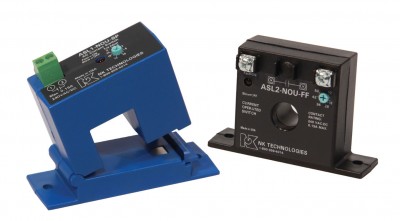
ASL Linear Adjustment Setpoint Current Sensor
The ASL Series AC Current Sensor provides a current operated solid-state contact powered from the monitored circuit. The trip point adjustment uses a single turn potentiometer. This means the installer can set the point where the output changes state when the monitored circuit is not energized, by turning the adjustment arrow to the current magnitude needed, and install the sensor over the conductor. Proper installation couldn’t be easier.





EASILY ESTABLISHED CONTACT ACTUATION POINT
- Patented potentiometer setpoint selection.
- Trip point indicated on the labeling.
- Trip point can be set without energizing the monitored load, adding a large measure of safety.
- Two-second delay before contact action upon initial energization allows the output to ignore motor inrush current.
ISOLATION
- Output is magnetically isolated from the input for safety.
- Eliminates insertion losses, no added burden.
SOLID-STATE RELIABILITY
- No moving components for switching.
- No need for periodic maintenance or calibration.
PANEL MOUNTED SOLID OR SPLIT-CORE CASE
- Split-core housing allows installation without disturbing existing wiring and can be mounted in any position.
- Either enclosure can be attached to a panel, hung on the conductor or on a DIN rail using adapters.
- Solid or split core housings provide windows large enough for 150 A loads, non-contact design provides complete isolation between primary circuit and control circuitry.
NO EXTERNAL POWER NEEDED
- Sensor is powered from the monitored AC circuit.
- Choose normally open (closing on current increase) or normally closed (opening on current increase).
- Fast action contact reacts quicker than RTD, thermocouples, or bimetallic thermal elements.
